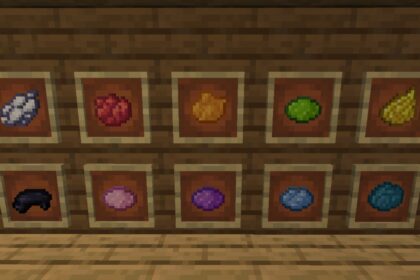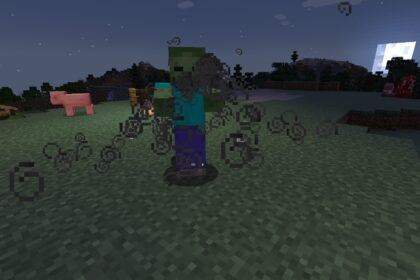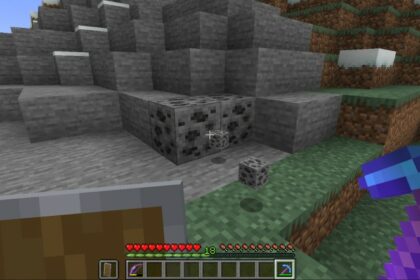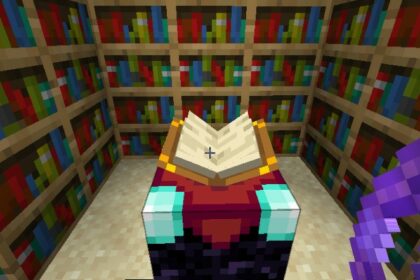Nether fortresses generate in a mid to late-game dimension, the Nether. These types of structures are highly attractive to find for their loot and mobs inside.
However, similar to randomly-generated structures in the Overworld, nether fortresses are challenging to find.
The main benefit of finding a nether fortress in Minecraft is the structure’s blaze presence. These mobs provide a fundamental to progress into the game, especially if you consider alchemy-crafting vital for your play style.
Nether fortresses have generation patterns, and although they’re tough to find, you can study their spawn behavior to enhance your chances of stumbling into them. So, in this article, we’ll discuss how to find a nether fortress in Minecraft.
The Nether
First of all, it’s vital to be aware of dimensions’ limitations in Minecraft.
Unlike traditional randomly-generated structures such as dungeons, sunken ships, and temple ruins, which spawn in the Overworld, Nether fortresses don’t.
The first dimension you start at is the Overworld. In most gameplay progressions, the Nether is the second dimension you get access to, and the End-dimension is the last.
The Nether dimension is a hell-like environment with blocks, mobs, music, and a general atmosphere that feels tormenting. This game part has exclusive biomes, structures, blocks, materials, etc.
To progress in Minecraft, you’ll need to gather stuff from the Nether at some point.
Finding a Nether fortress outside of the Nether dimension is impossible. Therefore, you need to hop out of the Overworld into a Nether portal.

Building a Nether Portal
Accessing the Nether is mostly achievable by players in a mid to late-game status. The reason is that changing dimensions requires a portal and the Nether portal needs a specific tough-to-get block, Obsidian.
To gather Obsidian in Minecraft, you need to have a diamond pickaxe or something superior. Otherwise, if you break an Obsidian block with a gold, iron, stone, or wood pickaxe, the block will break and won’t become a dropped item.
You’ll need three diamonds and two sticks to craft a specific pickaxe. After acquiring the necessary items, follow this setting on a crafting table:

Now, search for Obsidian blocks with the diamond pickaxe in your hands. You can mostly find these blocks in deep-sea volcanoes, underwater ravines, superficial lava lakes, or any location where lava meets water.

Alternatively, you can create an Obsidian farm, which requires a few lava buckets, Redstone, and a bunch of building blocks.
After acquiring at least ten units of Obsidian, you can build the Nether portal’s frame. The portal’s structure must follow a rectangular shape ranging from 4×5 minimum to 23×23 maximum. Although aesthetically pleasing, you don’t need to fill the portal’s corners.
With the Nether portal’s frame completed, you can activate it and create a path to the Nether dimension. To do so, you’ll need to hold a “Flint and Steel” on any of the portal’s blocks and ignite a fire over it.
After igniting the portal, a purple layer of energy-like matter will dominate the portal’s center area; going through it takes you to the Nether dimension.
In this dimension, you can start searching for the Nether fortress.
Finding a Nether Fortress
Firstly, the best way to track a Nether fortress is by studying its generation patterns. So, let’s dive deeper into how this structure generates inside the game.
Nether Fortress’ Generating Pattern
Nether fortresses can appear anywhere in the Nether and are not biome-exclusive. When analyzing where to generate a Nether fortress, the game splits the Nether map into regions where either a fortress or a bastion remnant can appear.
These regions must be a fit for the structure’s composition.
Each region analyzed by the game is a 432×432-block area. However, the game disregards a four-chunk area on each segmented area’s south and east borders. Therefore, the eligible space where a fortress can generate is a 368×368-block area.
The Nether Fortress generation does not consider “ideal spots”. So, regardless of the eligible area’s condition, the game will clear up a space for a Nether fortress. Bastion remnants generate the same way.
For instance, the structure can generate deep into Netherrack.
The game will clear out an area for it to spawn, but Netherracks will surround all entrances of the fortress. Still, the structure’s internal space will be clear.
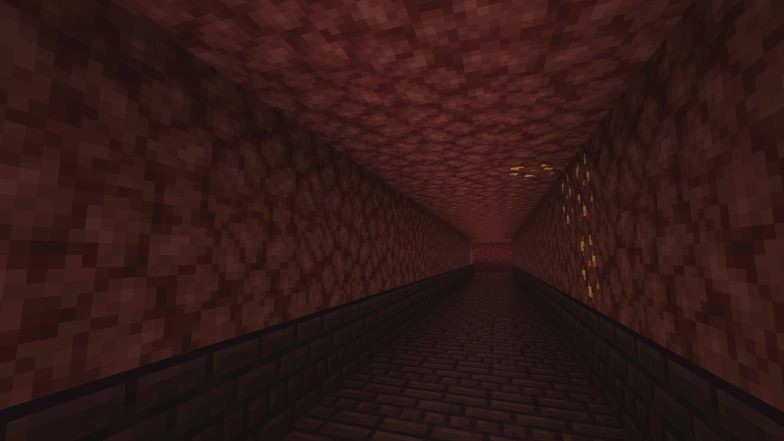
Nevertheless, two structures can’t generate in the same area. You’ll never see a bastion remnant sharing space with a Nether fortress. But, Nether fortresses have a lower chance of spawning (up to 40% compared to bastion remnants).
Since Minecraft has a geometrical pattern of generating Nether fortresses, finding more Nether fortresses becomes easier after stumbling into the first one.
In this case, if you follow north, you’ll undoubtedly find another one.
Alternatively, you can use a Nether Fortress finder tool, such as Chunkbase’s, which reads your world seed and points in a minimap to the location of the nearest Nether fortress.
Spotting a Nether Fortress
The Nether fortress has an exclusive structure, and spotting its blocks or format at a distance might get confusing. Therefore, understanding this building’s blocks and framing is vital for long-distance tracking.
A Nether fortress structure is composed of Nether bricks; this material is a red-colored building block with a brick texture pattern. A bastion remnant brick block differs from a Nether fortress for its lighter brown-ish color.

The fortress has two areas. The exterior area highlights itself in the distance by its long pillar-supported bridges, often emerging above lava lakes. The extension of this area is considered significant, with a high link of bridges sharing a path for the structure’s interior.
When a fortress spawns in netherrack, the exterior area becomes visually confusing and often out-of-sight.
Corridors occupy the fortress’ interior space in a maze-like setting. The exterior area connects to the internal segments through towers, featuring doors and walls to form an entrance. After passing the entrance, players will spelunk into four-way crossings, small rooms, stairways, etc.
Importance of Nether Fortresses
Finding the Nether fortress is vital for players who want to progress to the late-game scenario. The main reason is for this structure’s natural generation of “Blazes”, which are a Nether-exclusive mob.
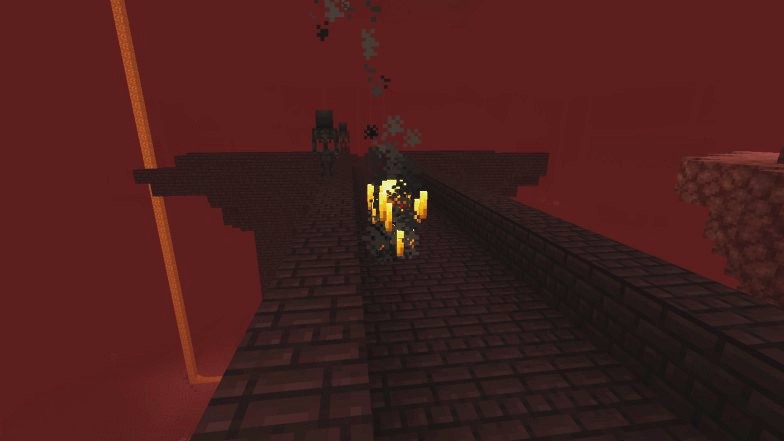
Blazes, when defeated by the player, can drop a rare item known as a “Blaze rod”. This item is essential for alchemy since it’s required to craft a brewing stand. In addition, blaze rods are necessary to prepare the “Eye of Ender”, which leads the player to an Overworld stronghold.
Brewing Stand
You’ll need a blaze rod and three cobblestones to craft a brewing stand. Next, follow this setting:

Blaze Powder
If you place a blazing rod on any crafting panel, you’ll get two units of blaze powder.
Blaze powder is a necessary ingredient for alchemy recipes; it can serve as a brewing component and as a fuel to the brewing stand. A single blaze powder piece can brew up to twenty batches of potion.
The most vital role of blaze powder is its importance for finding the end dimension portal. When combining a unit of blaze powder with an ender pearl on a crafting panel, you’ll get an eye of ender.
The “eye of ender” is a necessary item to find strongholds in Minecraft, which hosts the portal to the end dimension, a mandatory place to progress in the game’s campaign.
Among other uses for blaze powder and blaze rods, you can craft:
- Fire Charge
- Magma Cream
- End Rod

